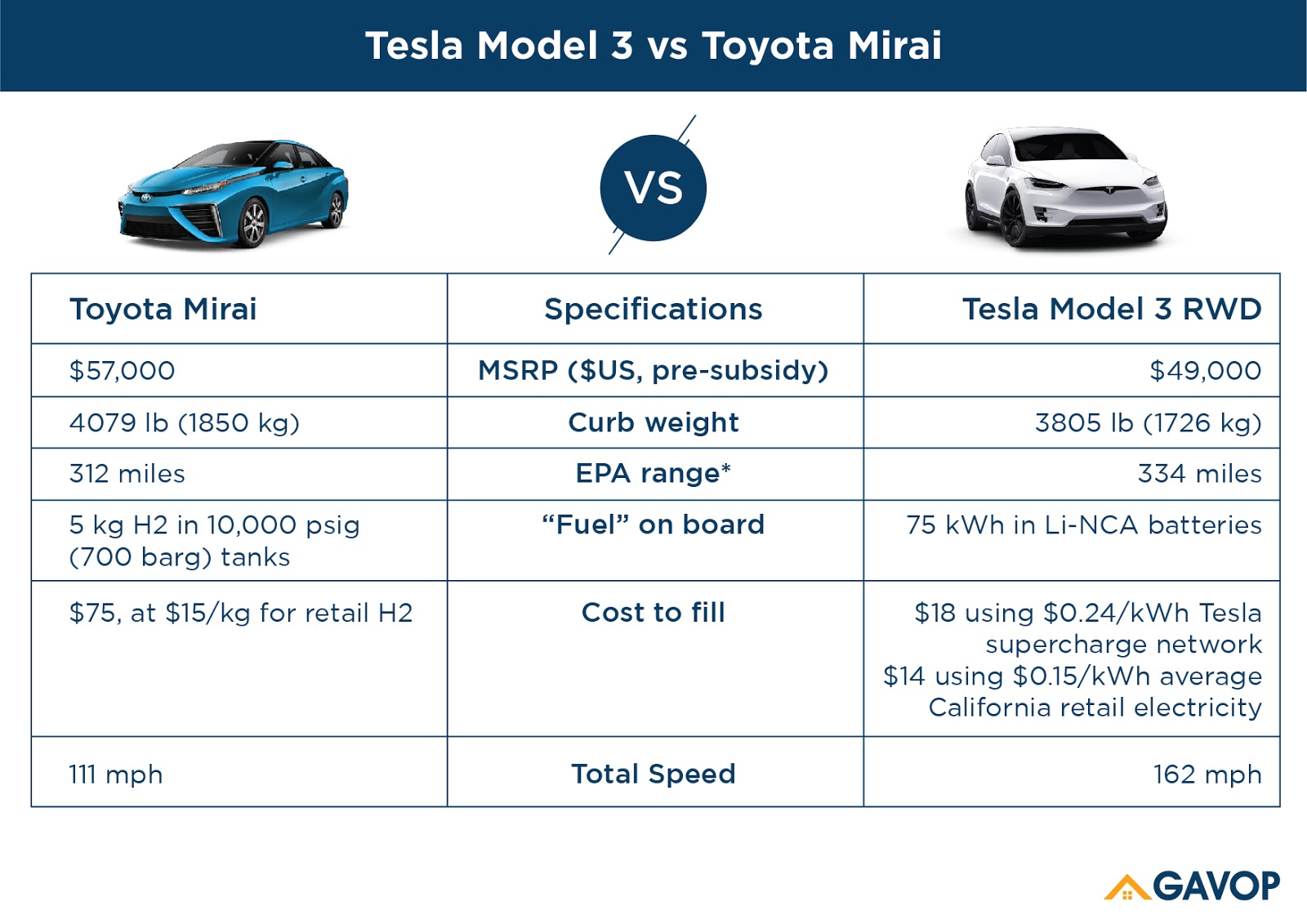Can Hydrogen Fuel Cell EVs Replace Battery EVs?
By: Hemanth Ramesh November, 21, 2019

The Toyota Mirai, is a hydrogen fuel cell electric vehicle (HFCEV), with a range of 300 miles. While the Tesla Model 3 is a battery electric vehicle, the Mirai is still an electric car, driven by an electric motor, but instead of a battery, it has a hydrogen fuel cell. The car has a tank into which pressurized Hydrogen is pumped, like a petrol or diesel car. Hydrogen is then combined with Oxygen from the air in the fuel cell to generate electricity. It generates electricity on demand, as the driver presses the pedal for the electric motor that drives the car. Newer car technologies have always struggled without an infrastructure that already exists. One reason for higher insurance premiums for such vehicles is because of expensive parts that are produced in limited quantities.
To the average person, while they are both electric cars, one wouldn’t know the difference. However, the philosophy behind these vehicles is not the same. The first objection to an HFC vehicle is that Hydrogen has to be extracted from something that we already have, like water or fossil fuel. This process of extraction called “cracking” is extremely energy-intensive, so there could be an argument that the efficiency of a Hydrogen car overall is not very good given that so much energy is lost while converting the energy resource (water, for example) into Hydrogen to be put into the car.
On the other hand, Tesla is a battery-operated car that uses an infrastructure that already exists. Besides, one can even charge it by plugging it into a domestic socket. However, to refuel the Toyota Mirai, one has to go to a Hydrogen filling station, and herein lies the problem. There are only 39 Hydrogen filling stations in the United States at present.
But by looking at the overall energy picture, and the idea of making the U.S. carbon neutral, the Hydrogen based EV starts making sense. The solution lies in offshore wind farms, from which Hydrogen can be cracked at the source and can be transported around as a fuel in pressurized containers. This fuel would not only be applicable for cars but could also be used as fuel for central heating systems, boats, trains, and even airplanes.
While the Tesla cars seem to be a solution to the emissions from cars in the immediate future, the Hydrogen Fuel Cell cars seem to be part of a bigger solution, which is about completely removing emissions from the world.
ABOUT THE AUTHOR

Hemanth Ramesh
Hemanth Ramesh works as a writer for Gavop. He has previously written content for film promotions, start-ups, advertising agencies and event management firms. Hemanth Ramesh completed his MA in Journalism and Mass Communication from The English and Foreign Languages University. His other passion includes script writing.
